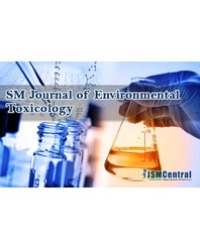
Growing of Ipomoea aquatica in Seaweed Supplemented Hydroponic System and Identifying Possible Genera of Microbes in the System
Hydroponic system is method of growing plant in nutrient rich solution. The seaweed biomass that is usually disposed as waste once the carrageenan component is extracted from it can be used as a fertilizer. Since nutrients in hydroponic system provide an ideal environment for microorganisms to grow, water-based microorganisms can be easily introduced into the system. This study compared the growth of water spinach (Ipomoea aquatica) grown in hydroponic system. The effects on the growth of plants in the hydroponic system when seaweed waste is used as the fertilizer were also studied. Furthermore, the possible genera of the microbes present in the water samples obtained from the hydroponic system were identified. The plants were grown in treated hydroponic tank (with seaweed waste fertilizer) and untreated hydroponic tank (without seaweed waste fertilizer). The mean heights of the plants in each condition were obtained and compared. Water samples were collected from the treated and untreated and biochemical tests were also carried out using the water samples collected to identify the possible genera of the microbes present in the hydroponic system. The plants height of treated tank is significantly taller than untreated tank. The microbe present in the treated tank was either Chromobacterium spp./ Vibrio spp./ Plesiomonas spp./ Aeromonas spp., Acinetobacter spp., Bordetella bronchiseptica/ Alcaligenes spp./ Shewanella spp./ Pseudomonas spp.(alkali producers), Kurthia spp. and Cardiobacterium spp., and in the untreated tank were Acinetobacter, Bordetella bronchiseptica / Alcaligenes spp./ Shewanella spp./ Pseudomonas spp. (alkali producers) and Chromobacterium spp./ Vibrio spp./ Plesiomonas spp./ Aeromonas spp. Further research need to be carried out to identify the exact bacterial strain of each microbe. By identifying the microbial population of the hydroponic system, further studies can be carried out to identify the beneficial and harmful bacteria. The harmful bacteria can then be eliminated from the hydroponic system to promote healthy growth of plants through hydroponic cultivation.
Vi Sion Chang and Swee Sen Teo*

